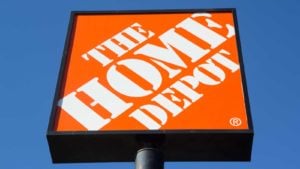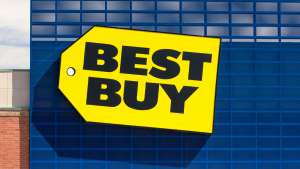Not every stock is a winner, and exiting positions before they get worse can shield you from losses. Granted, you shouldn’t exit a stock just because of short-term headwinds that 5-10 years can fix. However, the consumer dynamic is shifting, and some companies get left behind or face multi-year recoveries. It’s important to consider the current economic environment and how companies will adjust when considering the stocks to sell.
Some companies are naturally positioned to do better in economic downturns than others. People still need to buy the essentials, but discretionary spending takes a hit, especially luxury spending. These three stocks look concerning heading into 2024.
Home Depot (HD)

Home Depot (NYSE:HD) has been a reliable blue-chip stock for several years. Shares have gained 65% over the past five years but are down by roughly 10% year-to-date. Most of those declines have happened over the past week.
Retail theft still looms, but it’s not the biggest headwind the company faces. Housing demand is falling sharply and is currently at its lowest since 2010. Home Depot stock still performed well despite shortening housing demand in 2022, but it’s been catching up to the company.
Home Depot has posted two consecutive quarters of declining year-over-year revenue and earnings growth. The quarter before those two featured revenue and earnings growth below 0.5% year-over-year.
Inflation remains a threat that can dampen consumer spending. Home Depot already tipped investors off on this risk, projecting sales and comparable sales to decline in Fiscal 2023. The company has noticed a continued decrease in discretionary spending on big-ticket items.
Best Buy (BBY)

Best Buy (NYSE:BBY) faces similar obstacles as Home Depot but has a lower market profile. While Home Depot primarily competes with Lowe’s (NYSE:LOW), Best Buy competes with the tech giants that have set up their retail operations.
Best Buy shares are down 15% year-to-date and have been flat over the past five years. The company has a 12 P/E ratio and a 5.35% dividend yield, but those metrics are low for plenty of reasons.
The company has posted several consecutive quarters of year-over-year revenue and earnings declines. The drops are more dramatic than other companies that generate most of their business from retail properties.
Best Buy reported a 6.2% year-over-year drop in comparable sales and a GAAP diluted EPS of $1.25. That EPS doesn’t offer much wiggle room for the quarterly dividend distribution of $0.92 per share. It represents a risky 73.6% dividend payout ratio.
Best Buy also has $8.4 billion in current liabilities. The company has $8.3 billion in current assets, but $5.65 billion of that is merchandise inventories that depend on consumer spending and demand. The company only has a $1.01 billion cash position.
Best Buy is already vulnerable and has a current ratio below 1.0. If inventories don’t sell as expected, the ratio gets even worse and puts Best Buy’s ability to sustain its dividend into question.
Even worse, 41% of the company’s sales in Q2 came from computing and mobile phones. The smartphone industry is slowing down as more people sensibly hold onto their older devices for longer.
Best Buy looks poised to follow the same path as Gamestop (NYSE:GME). The company seems eligible to be out of business within the next 10 years, but it may have one last hurrah as a meme stock before riding off into the sunset.
Simon Property Group (SPG)

Simon Property Group (NYSE:SPG) has not been the best long-term investment in recent years. Shares are down by about 10% year-to-date as the stock continues on its 40% drop over the past five years.
The company has a 16 P/E ratio and a 7% dividend yield. However, a low P/E ratio and a high dividend yield don’t always indicate a good investment. SPG has the elements of a dividend yield trap.
The real estate investment trust has a large portfolio of shopping malls. Anchor tenants are struggling, and it’s not just Best Buy. Target (NYSE:TGT) has $16,098 in current assets and $19,332 in current liabilities. That sets the stage for a 0.83 current ratio.
When anchor tenants report declining revenue and earnings, it’s not a good sign for Simon Property Group. Shopping isn’t fun anymore for most people, and online shopping is more convenient.
Declining revenues will first be Simon Property Group’s tenants. Some of those tenants will then close stores and minimize their physical footprint. Physical shopping needs a renaissance of sorts to help Simon Property Group’s tenants stay afloat. As more tenants struggle, Simon Property Group can end up with big losses.
On the date of publication, Marc Guberti did not have (either directly or indirectly) any positions in the securities mentioned in this article. The opinions expressed in this article are those of the writer, subject to the InvestorPlace.com Publishing Guidelines.
